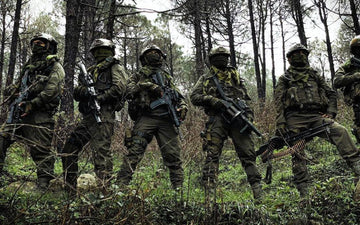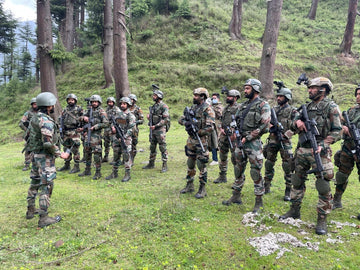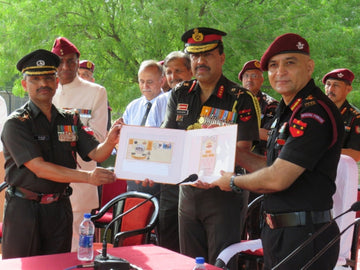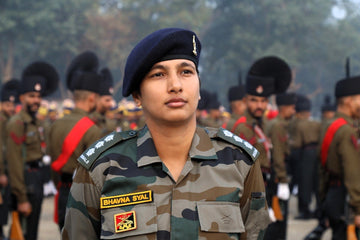The Thematic Apperception Test (TAT) stands as a cornerstone of psychological evaluation within the Services Selection Board (SSB) interviews, an indispensable gateway for candidates aiming to serve in India's Defence forces. As aspiring officers undergo rigorous assessments, understanding the nuances of the TAT can significantly enhance their preparation and performance. This article delves into the depths of the TAT, exploring its origin, structure, purpose, and its pivotal role in SSB interviews.
Historical Context
Conceived in the 1930s by renowned psychologists Henry A. Murray and Christina D. Morgan at Harvard University, the Thematic Apperception Test was born out of a need to assess human personality through storytelling. It marked a shift from conventional psychological testing methods, introducing a projective approach that became widely utilized in clinical and applied psychology. Originally comprising 31 picture cards intended to elicit narratives reflecting personal thoughts and emotions, the TAT has been adapted over time to cater to a variety of contexts, including military assessments.
Understanding the Thematic Apperception Test (TAT)
Nature and Purpose of the TAT
The TAT is classified as a projective psychological assessment tool, designed to probe the subconscious layers of an individual’s mind. Unlike standard psychological tests which rely on direct interrogation, it utilizes evocative images to stimulate storytelling, providing insights into one’s personality traits, emotional dispositions, and motivations.
In the context of SSB interviews, the TAT holds multifaceted significance:
- Assessment of Thought Processes: By interpreting ambiguous stimuli, candidates reveal their cognitive patterns and thought processes.
- Evaluation of Emotional Responses: How individuals narrate their stories uncovers their emotional intelligence and resilience under pressure.
- Measurement of Leadership Potential: The narratives crafted can indicate leadership qualities, adaptability, and decision-making skills critical for military personnel.
Test Structure and Administration
During the TAT, candidates are presented with a series of typically 12 images, each designed to provoke a personal story. As they narrate their responses, they are expected to focus on the main character's motivations, challenges, and conflict resolutions. Here are key aspects of the TAT’s structure:
- Image-Based Stimuli: The images presented may range from abstract concepts to detailed scenes, leaving much open to the imagination of the candidate. This ambiguity is intended to elicit deeper, more personal stories.
- No Fixed Parameters: Candidates are not required to specify characteristics such as age, gender, or background of the main character, allowing for greater creative freedom and expression.
- Performance Environment: The TAT is part of the screening process post the initial assessments (Stage 2), alongside other psychological evaluations like the Word Association Test (WAT), Situation Reaction Test (SRT), and Self Description Test (SDT).
Key Assessment Criteria
The TAT evaluates several core aspects of a candidate's psychological profile:
- Thought Processes: How candidates organize their thoughts and respond to the stimuli provides insights into their cognitive abilities.
- Observation Skills: Strong observational skills are crucial for military effectiveness, and the TAT rewrites how well candidates interpret the nuances in images.
- Emotional Responses: The ability to articulate feelings, empathy towards characters, and the overall tone of the stories outline emotional maturity.
- Creativity and Inventiveness: The narrative's inventiveness is crucial, as military environments often demand innovative solutions under stress.
Case Studies and Real-World Applications
Several candidates have shared experiences that underline the relevance and challenges faced during the TAT in SSB interviews. Anecdotal evidence suggests that narratives expressing teamwork, leadership, and ethical dilemmas tend to resonate well with assessors, highlighting qualities essential for military officers.
For instance, one candidate illustrated a scenario where a protagonist overcame adversity in a group setting, reflecting on teamwork and collaboration—a core value in the armed forces. Such responses, cherished for their depth and reflection of military ethos, enhance the candidate's profile in the eyes of selectors.
Moreover, these sessions provide the assessors warmth and insights, allowing them to gauge a candidate’s suitability beyond qualifications and physical fitness, which traditionally dominate the selection process.
Statistical Data and Research Insights
Research into projective tests like the TAT suggests their effectiveness in predicting behavioural outcomes in real-world scenarios. For example:
- A study conducted among military officer candidates found that those who exhibited higher creativity and emotional intelligence through TAT narratives displayed stronger leadership capabilities during practical training exercises.
- Such findings indicate that the TAT not only assesses subjective qualities but also correlates with observable behaviours and competencies desirable in military leadership.
Furthermore, aggregation of narratives from various candidates during TAT sessions allows assessors to identify common themes that may be indicative of underlying personality traits prevalent among successful candidates.
Comparative Analysis with Other Psychological Tests
While the TAT primarily focuses on narrative creation and subjective interpretation, it operates alongside other psychological tests that offer different mechanisms for assessment. Let’s explore how it stands apart from each:
- Word Association Test (WAT): In WAT, candidates respond to stimuli words with quick thoughts or phrases. Here, responses are more direct and less nuanced than the TAT, which immerses candidates in story creation.
- Situation Reaction Test (SRT): Unlike TAT that leverages images, SRT requires candidates to respond to specific scenarios or situations in writing, examining their problem-solving skills more explicitly.
- Self Description Test (SDT): This tests self-perception across various dimensions, whereas the TAT emphasizes narrative creation reflecting one's personal perspectives through imaginary scenarios.
Each test has its unique emphasis and utility, reinforcing how candidates exhibit different facets of their personalities. While the TAT offers deeper storytelling exploration, the other tests balance it with more direct assessments of specific competencies.
Challenges and Solutions in the TAT
Implementing a projective test such as the TAT presents challenges, both for candidates and assessors:
Challenges for Candidates
- Anxiety Levels: The ambiguous nature of the images can create performance anxiety among candidates, affecting their storytelling ability.
- Misinterpretation: Candidates may struggle with how to interpret image prompts creatively and align their responses with expected qualities.
Possible Solutions
- Preparation Workshops: Mock TAT sessions can be organized to familiarize candidates with the test format. SSBCrack offers resources and workshops that can demystify the process for aspiring candidates.
- Guidance on Narrative Structures: Providing candidates with examples of successful narratives could enhance their comfort levels and performance through better understanding of effective storytelling.
Future Trends and Predictions
As psychological assessments continue to evolve, the TAT will likely benefit from technological advancements. Incorporating digital platforms for narrative evaluation could enhance objectivity and efficiency. Virtual reality (VR) tools may even emerge, presenting dynamic images that allow candidates to engage in interactive storytelling, augmenting the test's effectiveness.
Using big data analytics, selectors could potentially analyze trends from thousands of TAT results, providing insights into common characteristics of successful candidates, and refine the selection criteria further. Continuous research will play a vital role in validating the effectiveness of the TAT against contemporary military requirements and psychological theories.
Conclusion
The Thematic Apperception Test emerges as a vital cog in the psychological evaluation machinery during SSB interviews, providing invaluable insights into a candidate’s psyche through the lens of storytelling. As the armed forces continue to seek candidates who embody leadership, emotional intelligence, and adaptability, understanding and preparing for the TAT becomes imperative.
Candidates aiming to excel in the SSB interviews should focus not only on physical and practical preparation but also on honing their storytelling abilities, foster keen observation skills, and develop greater emotional awareness. To succeed in these tests and ultimately, in their military careers, aspiring officers must be proactive in utilizing platforms such as SSBCrack, which offers tailored resources, mock tests, and expert insights to navigate the complexities of these evaluations.
By embracing the challenges of the TAT and learning from its narrative-driven approach, candidates stand a better chance of articulating their individual strengths and foresight, paving the way for stellar careers in India's Defence forces.





